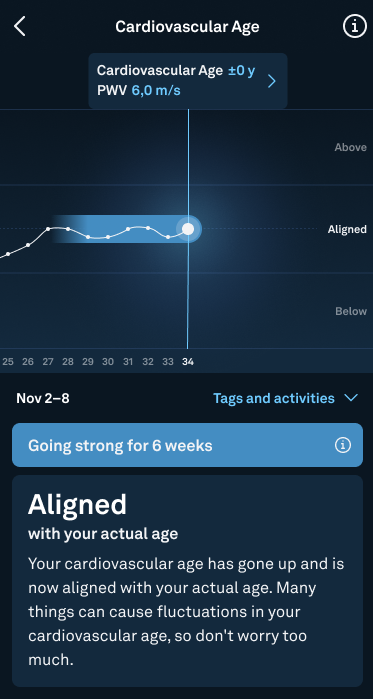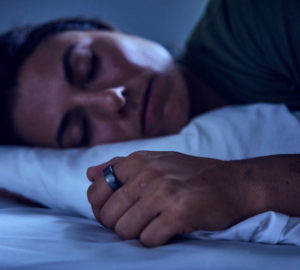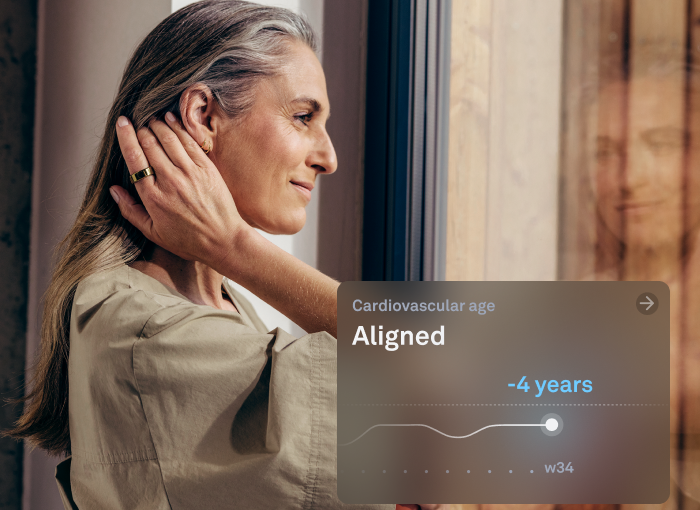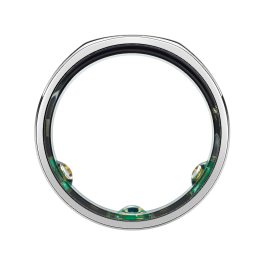ŌURA, maker of Oura Ring, the most accurate and trusted smart ring, announced the launch of two new heart health features: Cardiovascular Age (CVA) and Cardio Capacity. The two product advancements signal the next evolution of ŌURA, furthering its expansion from a best-in-class sleep tracker to a comprehensive health device and personal health companion, making holistic health more accessible.
“At ŌURA, we know that health is not a moment in time or season; it’s a lifelong journey,” said Holly Shelton, chief product officer at ŌURA. “We’re dedicated to creating, validating, and offering new and innovative product offerings that give our members context about their health over the long term. Along with providing continuous, accurate data, health technology needs to answer the critical ‘so what?’ question. We’re connecting the dots to help our members understand how their habits and behaviors today—like aerobic activity and sleep hygiene—impact their health as they age and how they can make changes that will pay off later in life.”
Heart disease remains the leading cause of death globally, responsible for a third of all deaths. Because cardiovascular and heart disease can present in a variety of ways—including disorders of the heart and blood vessels like coronary heart disease, heart attacks and strokes, cerebrovascular disease, chronic kidney disease, and other conditions—it can be difficult for people to understand the state of their heart health and take preventative steps before an unwanted health event like a heart attack or stroke.
ŌURA’s heart health features work together to combine information about estimated arterial stiffness and VO2Max to give ŌURA members an indication of their cardiovascular health and the potential implications on their long-term health.
Cardiovascular Age
 Cardiovascular Age helps ŌURA members understand their estimated cardiovascular age relative to their chronological age, helping them identify behaviors that can positively impact their health span. ŌURA gauges CVA by analyzing age-related observations within a photoplethysmograph (PPG) signal, which carries information about estimated arterial stiffness and pulse wave velocity (PWV).
Cardiovascular Age helps ŌURA members understand their estimated cardiovascular age relative to their chronological age, helping them identify behaviors that can positively impact their health span. ŌURA gauges CVA by analyzing age-related observations within a photoplethysmograph (PPG) signal, which carries information about estimated arterial stiffness and pulse wave velocity (PWV).
CVA provides a quick, easy-to-digest look at how a person’s vascular system may be aging and what that could mean for long-term health.
How it works:
After an ŌURA Member has used the Oura App for at least 14 days, they will see a CVA metric that indicates if they are trending below, above, or in alignment (within 5 years) of their chronological age.
Cardio Capacity
Cardio Capacity is based on an estimation of VO2Max, which is a measure of the maximum amount of oxygen an individual can use during intense or effortful exercise. It is a well-known benchmark of aerobic endurance, reflecting the efficiency of the body’s cardiovascular and respiratory systems in supplying oxygen to the muscles during sustained physical activity. In simple terms, the better a person’s cardio capacity, the healthier their cardiovascular system (and organs) will likely be across a lifetime.
With the launch of this feature, ŌURA aims to reposition VO2Max from a sports metric to a benchmark of health span and longevity. It reveals how well your heart, lungs, blood vessels, muscles, and nervous system all work together. For most members, a high VO2Max is likely to be correlated with an ‘aligned’ or ‘lower’ CVA.
How it works:
To use this feature, ŌURA members will be prompted to take a walking test to establish a baseline VO2Max that is translated to Cardio Capacity. Traditionally, VO2Max is measured in a lab using specialty equipment that is inaccessible, both physically and financially, for most of the population. ŌURA’s approach is a purposeful departure from that method; it’s more accessible for more people (i.e., not just elite athletes), providing insights that extend beyond performance.
“Prioritizing cardiovascular health is crucial for extending healthspan, as it supports physical vitality and resilience, and reduces the risk of chronic diseases,” said Dr. Shyamal Patel, senior vice president of science at ŌURA. “In partnership with board-certified cardiologists and scientists at research institutions like the Kuopio Research Institute of Exercise Medicine (KULTU) and the University of California, Los Angeles, along with ŌURA’s medical advisory board, we have rigorously developed our science and algorithms to ensure these features deliver accurate insights for ŌURA’s wide-ranging and diverse member base. We’re committed to continued investment and development in heart health and look forward to continued expansion in this critical area.”
Establishing heart health as a core focus area, ŌURA aims for future iterations of Cardio Capacity to integrate into larger holistic health views in the ŌURA App, demonstrating the relationship between changes in Cardio Capacity and CVA, or how these outcomes may change Activity and Readiness trends over time.
Expected Outcomes
The goal of these new features is to address health holistically, with the understanding that each part of a person’s physiology is inextricably intertwined. While CVA and Cardio Capacity are heart health features, both have implications for multiple organ systems. CVA estimates the stiffening of large arteries, which has direct effects on the heart and also other major organs including the brain and kidneys. As a result, both CVA and Cardio Capacity are much more than heart health features, they are comprehensive health span insights.
Importantly, ŌURA provides actionable insights to help members change or maintain CVA, depending on their goals. ŌURA shares weekly and monthly insights into how CVA and Cardio Capacity metrics are trending, offering strategies to sleep, move, and de-stress better. These insights can be useful for individuals as well as clinicians, research institutions, and more. For healthcare professionals and researchers, ŌURA’s heart health features can provide valuable data for patient care, clinical assessments, and research studies, and for human performance teams in sports and military settings, they can help athletes and personnel optimize training and performance based on cardiovascular health metrics.
“A better understanding of heart health and cardiovascular capacity is critical to long-term health,” said Dr. Jag Singh cardiologist and professor of medicine at Harvard Medical School. “Wearables are uniquely positioned to give people a non-invasive and simple way to understand how they are doing cardiovascularly before they require intervention. The power of wearables in prevention and longevity is undeniable. While not a replacement for gold-standard lab tests, they can fill an important gap in accessibility and usability for people at scale.”
Cardiovascular Age and Cardio Capacity are rolling out to ŌURA members in late May 2024 and will be available on Oura Ring Gen3 devices on both Android and iOS.





